How I Brought Cellular Connectivity to My Mountain Village for 1st Time: IIT-B Student
Thanks to IIT-Bombay PhD student Tejasvi Chauhan's efforts of setting up a telecom tower in the remote mountain village of Baag in Himachal Pradesh, children can now attend online classes.
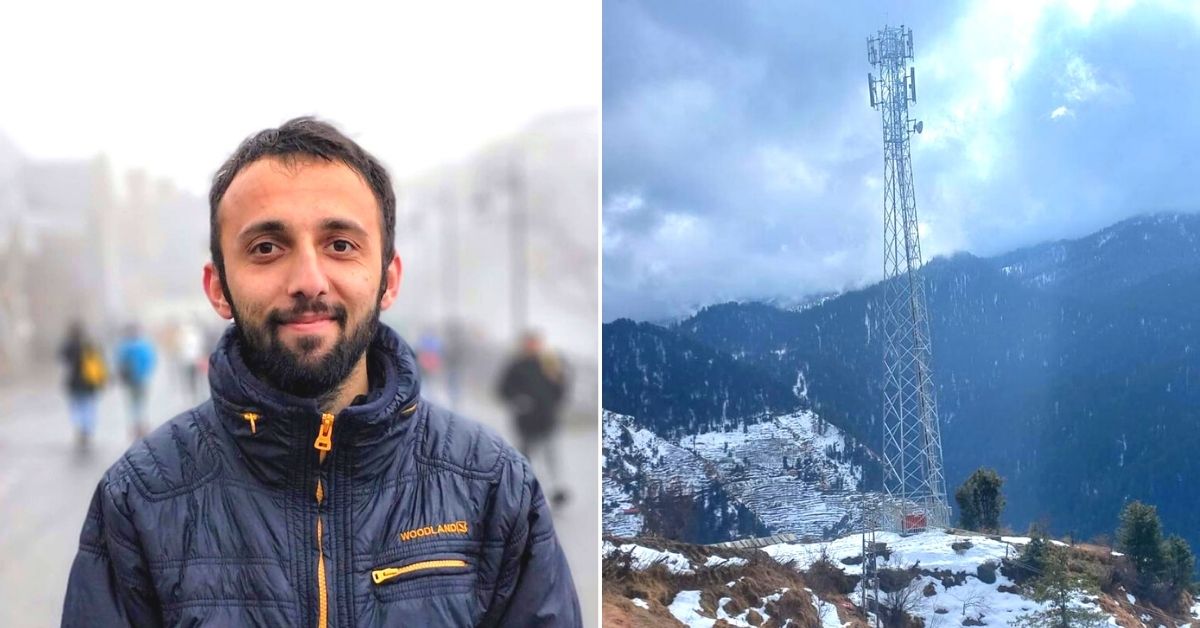
On 19 January 2022, Tejasvi Chauhan, a Prime Minister’s Research Fellow studying water resource engineering at the Indian Institute of Technology Bombay (IIT-Bombay), shared his first video call with his grandparents who live in a village called Baag in Himachal Pradesh. (Above image of Tejasvi Chauhan-left and the telecom tower-right)
Located in the Gram Panchayat of Jodna in Chopal Tehsil, Shimla district, this remote village nestled high up in the Lesser Himalayas didn’t have any cellular reception until 1 January 2022 when a 4G telecom tower went operational. Tejasvi could have shared a video call with his grandparents on 1 January, but they had no smartphone. Instead, they were forced to wait for his father to reach his village for a video call to happen. Sitting in their kitchen, they called their grandson with big smiles on their faces,
More importantly, however, this telecom tower would have never come into existence without the tireless efforts of their grandson. Its arrival has changed the face of not just Baag and Jodna, but also all the adjoining gram panchayats as well.
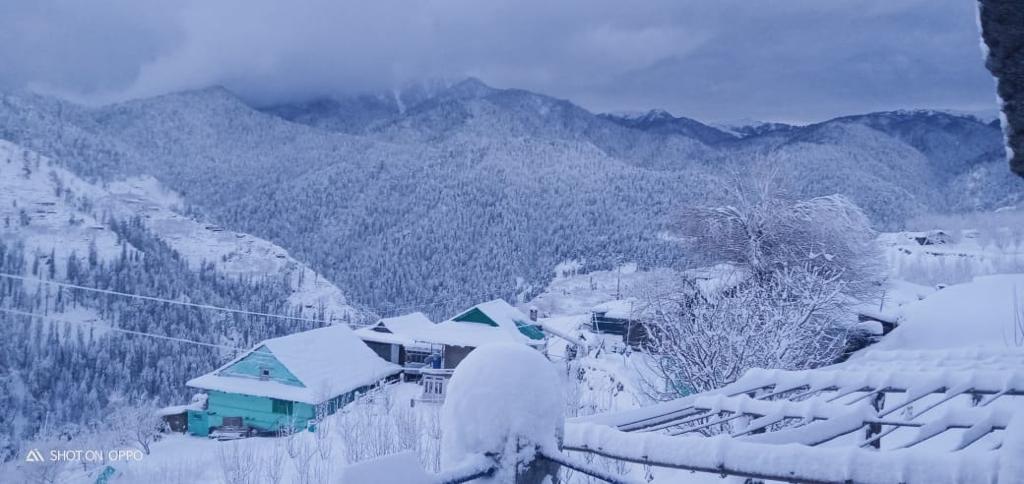
Connectivity Issues
With only eight houses, Baag is part of a cluster of small villages that make up Jodna panchayat, which alongside the adjoining panchayat of Sari, has a population of about 4,000, of which approximately 1,000 are students and 800 senior citizens.
As a child of a health worker and ex-serviceman (now farmer), Tejasvi recalls spending a couple of months during his winter holidays in Baag, which is located in one of the largest apple-producing regions in the state.
“It snows a lot there even today. Road connectivity was poor back then and we had to trek for nearly three hours to reach our village from the bus stop in a village called Pulbahal, which was akin to a ‘central business district’ for many nearby villages. This town had the only bank and police station in the region. Most of my memories are from the winter season when we played in the snow and some from the summers as well during the apple harvest season,” recalls Tejasvi, a PhD student at IIT-Bombay, speaking to The Better India.
As far as he remembers, the lack of telecom connectivity has always bothered his village. There were attempts in the past by villagers to address it. They would pay a visit to the local MLA and regional managers of service providers.
But Tejasvi admits that as a child the lack of telecom connectivity never really bothered him, however, something changed when he spent some time back home during the COVID-19 induced lockdown.
“Initially, my work suffered. Then one day I called all the children to my house and tried teaching them to see how much they know. I was surprised to see that they weren’t studying much despite the best efforts of their teachers. For a few days, I tried teaching science to the younger ones, but not for long and realised there was a bigger problem at play here. During the lockdown, school education suffered as children couldn’t attend online classes while obtaining urgent medical assistance was also not possible because of a network connectivity problem. So I started looking for solutions,” he says.
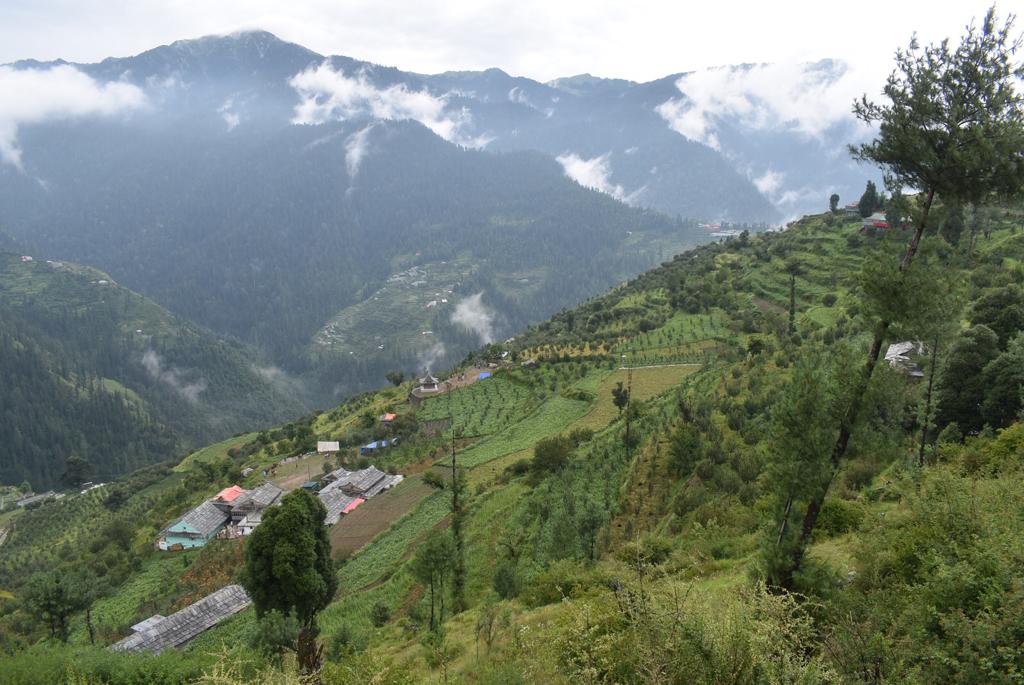
Searching for Solutions
After spending some time in Baag, Tejasvi visited Shimla where his mother used to work.
This was sometime in May-June 2020 and she has since been transferred. In Shimla, he found a few academic papers discussing low-cost remote communication by Professor Rajkumar Pant from the Department of Aerospace Engineering at IIT-Bombay and wrote to him as well articulating his problem.
“These papers discussed methods to facilitate remote communications through a network of portable antennas during situations like the 2013 Uttarakhand floods. Responding to my letter, Prof Pant said that he was happy that I wanted to solve the problem but told me these solutions are oriented towards facilitating communication during disasters. He explained that they wouldn’t help solve issues concerning online education and medical service delivery. He suggested I should look for more permanent solutions,” says Tejasvi.
However, what Prof Pant did was get him in touch with Sagar Sharma, an IIT-Bombay graduate who currently works at the Indian Semiconductor Mission, and Sandeep Gupte, who had some contacts at the telecom operator. He helped send Tejasvi’s message to the higher-ups there. Sagar, however, suggested that he should write a letter to the Ministry of Communications, Government of India. There were attempts to contact influential politicians from the state to facilitate this process, but that came to no avail.
“When this failed, Sagar suggested that I should write a letter detailing the problem and get it signed by our Panchayat Pradhan, then by our MLA and Member of Parliament (MP). Sagar told me to make sure that the letter was sent with the MP’s letterhead to the Union Minister of Telecommunications. After all, there are many files with the minister and my letter needed to have some ‘influence’ behind it,” he explains.
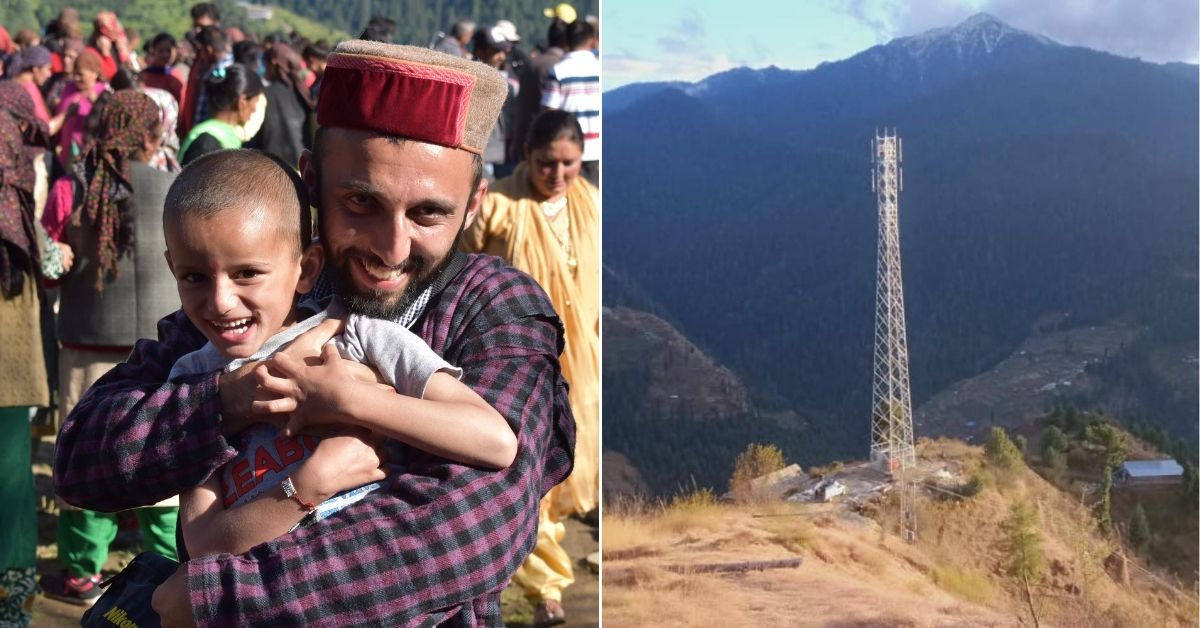
“While all this was happening, I independently tried contacting various officers at a government-owned telecom operator. All of them told me that we already had a tower nearby. What I soon discovered was that a ridge line restricted access to the network,” he adds.
A few months after sending the letter, Mohan Lal, an officer with the ministry’s Shimla office visited Baag to examine the situation. Lal surveyed the area, understood the problem and told Tejasvi that the Union government has a fund specifically for these situations called Universal Service Obligation Fund (USOF). Lal spoke of trying to get a tower sanctioned for the area through it soon.
To the uninitiated, the USOF is a pool of funds generated by a 5% Universal Service Levy that is charged upon all the telecom fund operators on their Adjusted Gross Revenue (AGR). Once collected, this fund is deposited in the Consolidated Fund of India.

Finding Connectivity
“Sometime in the first quarter of 2021, a survey was conducted to find appropriate land for the construction of a telecom tower, following which an individual contractor came to our village and constructed it. The construction process took a couple of months longer than expected as there were issues like transporting material given the poor condition of the roads there due to frequent landslides. The tower construction was completed in December 2021. Suffice it to say, all the residents of Baag are ecstatic. We just had a lot of snowfall and everyone is sharing their pictures and videos on social media,” he says.
Besides a barrage of photos and videos on social media, there were other immediate changes that Tejasvi witnessed in his village. Students were able to attend online and give exams sitting at home. Earlier, they had to walk some distance to reach a place with reception for both their classes and exams, which was difficult on days with bad weather.
Additionally, calling an ambulance or making arrangements for recreational travel is now possible.
“In the long run, there are more potential benefits. Farmers here can think of accessing e-marketplaces while e-commerce is also a possibility. Earlier I wouldn’t see young people from my village staying in Baag for extended periods. They would go to nearby towns due to the lack of internet connectivity. This will change now,” he notes.
(Edited by Yoshita Rao)
Like this story? Or have something to share? Write to us: [email protected], or connect with us on Facebook and Twitter.

Similar Story
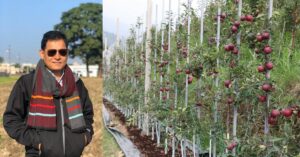
Amid Himachal’s Apple Crisis, Ex-Banker Turns Barren Land into Orchard With 20000 Trees
Ex-banker Vikram Singh Rawat turned a barren piece of land into a lush apple orchard and farmstay named Kalasan Nursery Farm, which he built over a decade. Today, it has thousands of apple trees and earns crores.
Read more >
If you found our stories insightful, informative, or even just enjoyable, we invite you to consider making a voluntary payment to support the work we do at The Better India. Your contribution helps us continue producing quality content that educates, inspires, and drives positive change.
Choose one of the payment options below for your contribution-
By paying for the stories you value, you directly contribute to sustaining our efforts focused on making a difference in the world. Together, let's ensure that impactful stories continue to be told and shared, enriching lives and communities alike.
Thank you for your support. Here are some frequently asked questions you might find helpful to know why you are contributing?


This story made me
-
97
-
121
-
89
-
167












